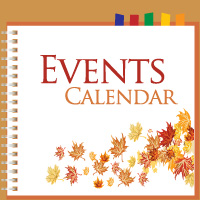Whiteboards enhance communication
Visual prompts help build relationships and trust through better communication
What if there were a simple, effective tool that could enhance communication - between health care providers, the person being cared for and even with their families or supporters?
There is. A whiteboard can be an incredibly effective communication tool in clearly communicating expectations.
"The tool doesn't take away the act of engagement with physicians, nurses or families. But it does keep links tight, and there are often less complaints and grievances because there are clear lines of communication," says Katherine Graham, Clinical Manager at Concordia Hospital. "Everybody knows what's going on."
Two years ago, Concordia Hospital did rollouts with whiteboards. The goal? To get people talking, to encourage interdisciplinary communication, but also to hopefully reduce the number of complaints received. The rollout was collaborative and explained the benefits of whiteboards for staff, people being cared for and their families.
Patients need to provide their consent for this tool to be used, but health care providers are also mindful of PHIA when using whiteboards.
A colour code - similar to a traffic light, red is acute, yellow is coming out of the medical stage and green means there is an estimated discharge date - is a visual cue to help people grasp at a glance what the situation is.
"The whiteboards have been helpful for being clear. In an active red zone, for example, we could note we are treating something that is in the acute stage. The yellow zone means increasing mobility and a note may be left from an occupational therapist to bring in clothes from home, for example. In the green stage, discharge - while it may be a moving target - is clearly communicated to help everyone prepare for that," she says.
The whiteboards are inclusive and everyone from physicians to nurses to allied health to health care aides to family members all have the capacity to leave a note on the board or ask a question. It serves as a grounding tool - each day the date is changed, which helps orient the person receiving care. The day's schedule, noting blood work or a CT are on the horizon or that the doctor is expected at a certain time, can be often noted. And the changes that occur during the course of a typical day allow for simple requests - please pick up information on Lifeline, notes from health care providers - are all elements that help enhance communication, and ultimately health care delivery.
"If used properly, it doesn't take away the need for verbal communication," says Graham. "Use it as an adjunct to prompt everyone and think about what's happening on a given day."
But notes to the person receiving care - please walk around the unit, your goal is to keep food down - are also part of the communication puzzle. And it's not all serious. Sometimes a picture or happy birthday are important elements to communicate too, because they can boost a person's spirits as they recuperate.
